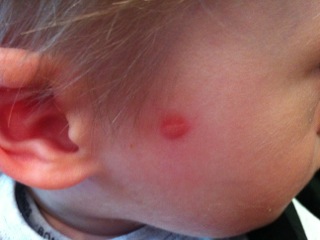Last updated: February 2024
What is Darier’s disease?
Darier’s disease is a rare, genetic disorder which causes a decreased and abnormal sticking together of skin cells and results in a variety of changes including irritating greasy crusted lumps on the skin and nail changes.
Who gets Darier’s disease?
Skin changes typically begin during adolescence. Darier’s disease follows an autosomal dominant inheritance pattern, where the condition is caused by a single gene from one parent.
Children with one parent affected have a 50% chance of inheriting the abnormal gene. 1 However, not everyone with the abnormal gene will exhibit clinical features of the disease.
What causes Darier’s disease?
Darier’s disease is caused by a gene mutation. While a child of an affected adult can inherit the disorder, it may also be caused by a new mutation without any previous history of family members being affected.
What does Darier’s disease look like?
The head and neck are the most commonly affected sites, especially the scalp and eyebrows. In some cases, the skin lesions can be more widespread.
There are several different clinical appearances. Typically, there are pink papules (small bumps) or plaques (larger raised or thickened areas of skin) with prominent pores which are the hair follicle openings. The mucin (gelatinous clear material) may ooze from these pores, especially if the area is touched or squeezed. There is usually loss of hair in the affected areas, sometimes accompanied by scarring. The skin lesions may be itchy.
There are no clear distinguishing features between benign or non-cancerous and lymphoma-associated cases.
Benign cases are more likely to occur in younger individuals. There are a small number of skin lesions which are localised to the head and neck.
Lymphoma-associated cases are more likely to occur in older individuals. A larger number of lesions occur across multiple body sites.

Figure 1. Jean L. Bolognia, Joseph L. Jorizzo, Julie V. Schaffer 2012 from Basic Principles of Dermatology – Third Edition

Figure 2. Localised Darier disease – Image reproduced with permission of Dr Margaret Oziemski
How is Darier’s disease diagnosed?
A skin biopsy is necessary to confirm the diagnosis.
How is Darier’s disease treated?
Treatment options will vary depending on the individual and their needs.
The aim of treatment is to relieve symptoms, treat complications such as infection and improve quality of life.
The following general measures may be helpful in preventing flare-ups, and include:
- avoiding triggers
- using adequate sun protection
- avoiding excessive heat
- wearing loose cool cotton clothing.
Treatment may include:
- Soap substitutes, moisturisers and creams containing urea or lactic acid in addition to topical vitamin A creams.
- Topical steroid creams to reduce irritation and itch.
- Regular use of antiseptics in the bath to reduce the chance of developing an infection.
- Oral medication, such as acitretin.
Sudden onset of pain or weeping or blisters requires a visit to the local doctor for a swab and then treatment with antibiotics or antiviral medication.
Surgical or laser removal may also be appropriate for smaller severely affected areas such as under the armpits.
Referral to a geneticist or genetic counseling may be necessary.
What is the likely outcome of Darier’s disease?
Many individuals with Darier’s disease present with mild symptoms, and these symptoms may clear up altogether. However, for more severe cases it may involve a chronic relapsing-remitting pattern.
Most individuals maintain overall good health despite the disease’s severity, but it can significantly affect psychosocial functioning.
Disclaimer
2019 © Australasian College of Dermatologists.
You may use for personal use only. Please refer to our disclaimer.